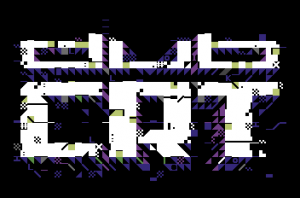 Quite some time ago I had a discussion with Goto80 in regards to a zany idea of releasing a Commodore 64 hardware cartridge that featured his music but combined straight SID songs with some form of glitchy visuals to accompany an album’s worth of material (ten songs or near enough). We threw around a whole swathe of ideas around in regards to outlandish features and mutual inspiration that formed a basis for what would end up being close to two years of gradual development.
Quite some time ago I had a discussion with Goto80 in regards to a zany idea of releasing a Commodore 64 hardware cartridge that featured his music but combined straight SID songs with some form of glitchy visuals to accompany an album’s worth of material (ten songs or near enough). We threw around a whole swathe of ideas around in regards to outlandish features and mutual inspiration that formed a basis for what would end up being close to two years of gradual development.
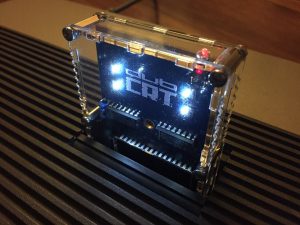
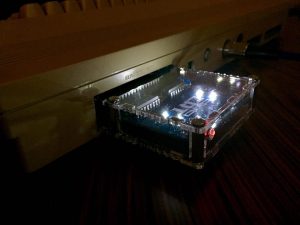
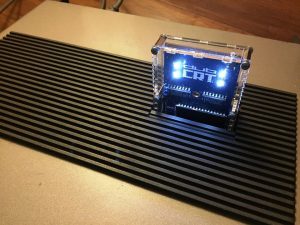
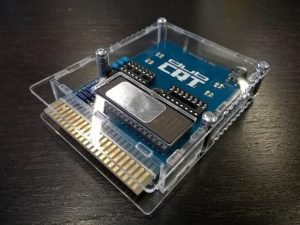
Goto80’s music has always appealed to me in that his stance on chiptune / chip-music is that of a progressive outlook in favour of vacuous nostalgia-ridden arpeggios and ‘conventions’ that only succeed in keeping the genre hidden and obscure.
Goto80 suggested scene-legend 4Mat (Matt Simmons) as a potential coder since he had been active in terms of assembly coding and was eager to sink his teeth into something more considerable than smaller demos. iLKke had worked with 4Mat previously on a PET demo and he was quickly nominated for the role of any incidental PETSCII logos or other graphics.
Similarly 4Mat’s coding efforts had to that point been pointed at more of a glitch / progressive approach with his demo groups ORB and Atebit.
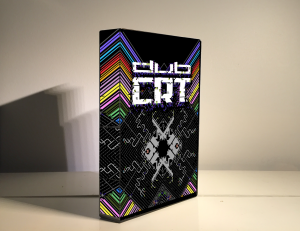
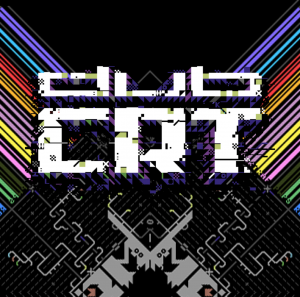
The basic ground rules were that all content of the cartridge (visually) was to utilise the PETSCII (or CBMSCII) character set and to hopefully avoid using too much conventionality in regards to menus or instructional text. Complete with all of its odd flaws, the Commodore character set (PETSCII or CBM ASCII) provides a quirky yet cool vocabulary for interesting graphics (with potentially low memory usage).
Somewhere along the way I released the Goto80 album_| ̄|○ on my label (DataDoor) and we decided to release a cut down version of the code that had been thus far written for DUBCRT with three tracks from the album, using three visualisers to match each track.

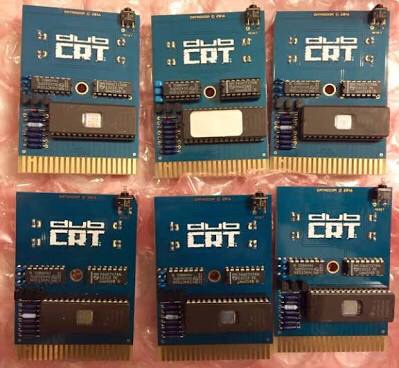
Endless inspiration was drawn from 1960s optical art, with our long-winded email threads being a dumping ground for endless images and references to pop-glitch culture and unusual use of text / PETSCII in artistic ways. Often references to less common Commodore64 games were made, such as:
Master of the Lamps (for its music and puzzle elements),
Jeff Minter’s Psychedelia (quite obviously for the fact that it was a ground-breaking light-synth),
Moondust (for its stunning use of generative / random music),
as well as well known grounbreaking demoscene releases such as Horses, Disco Calculi, AteBit / ORB prods etc. etc.
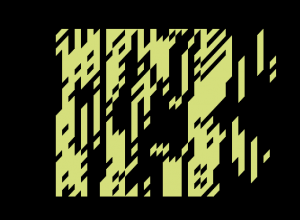
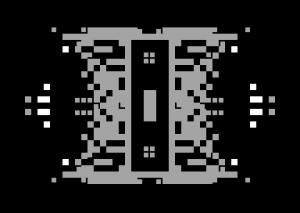

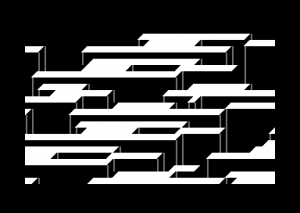
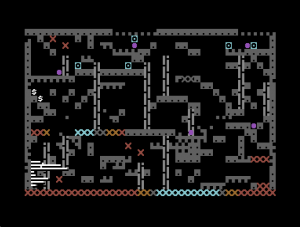

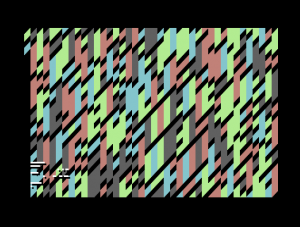

In regards to visual style and aesthetics, personally I have a huge fascination with geometric and optical art from long gone decades, and directly tried to influence the overall visual output by mostly force-feeding endless pictures into our email threads of artists such as Victor Vasarely, Bridget Riley, Josef Albers, Richard Allen etc. but also with huge head nods towards innovative video synthesis figures such as Stephen Beck, Eric Siegel, Daniel Sandin, Bill Etra etc. etc.

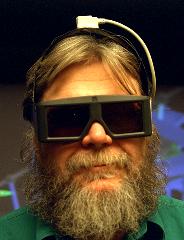
Some outlandish features were considered such as a slot for a second SID that could be added, an audio input that could control the visuals from an external sound source, a mini LED screen that endlessly produced weird text variations and gibberish for each song, however expense rapidly became an issue and we just settled for a nice custom designed case as the standard CBM style cartridge cases (whilst sturdy) are god-awful ugly.

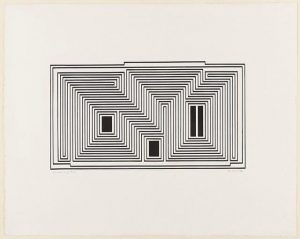

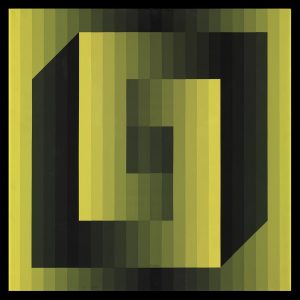
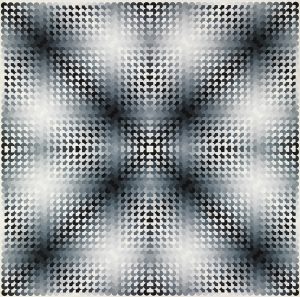

The PCB itself was designed by DDI in the States, who have been incredibly helpful in relation to the logistics of the hardware of the entire project. The fine etching of the DUBCRT logo on the PCB itself, the LED array and the red pulsing reset switch were all suggested by Dale at DDI, and the custom cartridge case (Plexi acrylic) was also something cued up from his connections.
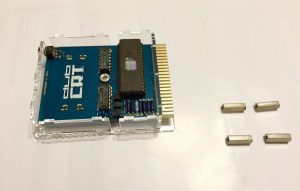



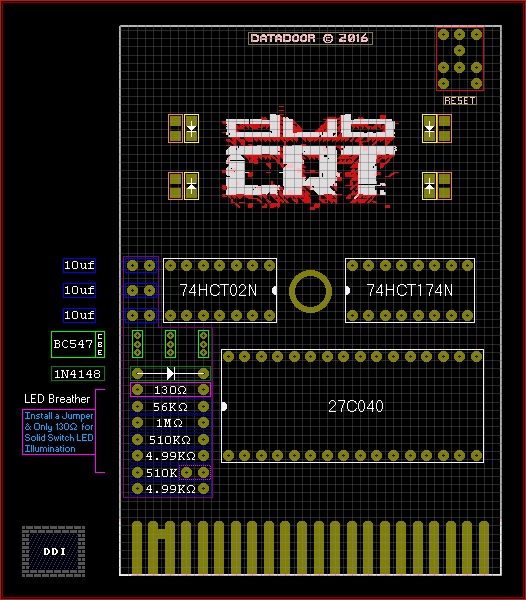
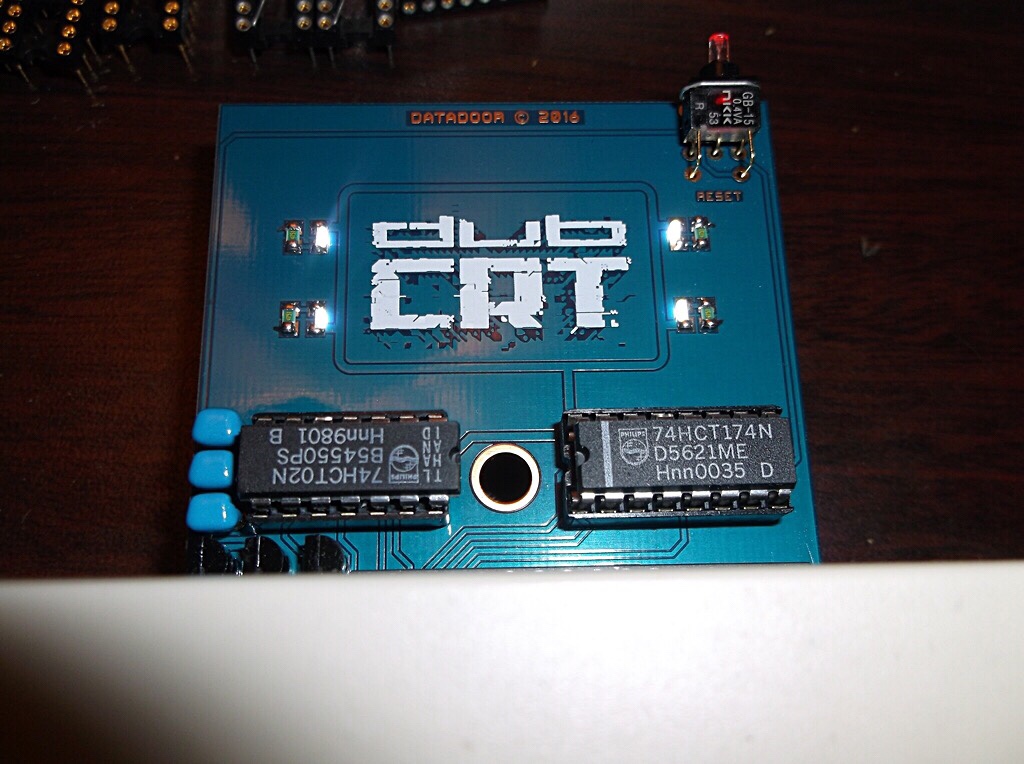
All of the songs are of course composed in Frantic’s amazing defMON tracker, which has now somewhat received a public release recently and I think this tracker and its mechanics are so intrinsically entwined with Goto80’s style of music which presents the very intriguing tangent of the relationship an artist has with his (custom) tools in that Frantic can effectively alter or amend features relatively quickly to meet his needs. Also keep an eye out for Scannerboy’s updated midi-sync user-port dongle that is currently being updated to more of a legitimate midi-interface / controller for use with defMON! (Previously it was just a midi/DIN clock-sync for defMON / MSSIAH to sync with external midi gear etc.).
In regards to the actual content, the cart boots into a cryptic puzzle that acts as the main menu – the operator can choose one of eight songs with an accompanying visualiser. Each visualiser can be altered via keyboard input to tweak certain features, with one visualiser being an interactive game of sorts with a joystick in Port #2. Upon exit from each visualiser / song, the main puzzle or ‘menu’ reflects a change in the puzzle pieces that the player has gained. If the puzzle pieces are arranged correctly, then new features are unlocked, and once a second puzzle is solved, a whole new section is revealed! (HINT SID remix module).
In closing, the whole process has been an amazing journey from big-talk concept to an actual piece of hardware, and enormous thanks to Goto80, 4Mat and iLKke for their expertise, endless ideas and ability to implement ideas so well in the lead up to realisation and manufacture! I am planning a remix of the whole concept and hope to do a DUBCRT V2 next year!
[DUBCRT had an order page (via bandcamp) that went live, and it proceeded to sell out in the space of about 2.5 hours, but the good news is that a new batch of DUBCRTs will be available late 2017 via a UK based C64 hardware vendor who has licensed the product].
Units can be ordered via the instructions on the dubcrt page on the DataDoor site here.
PERSONNEL
Goto80
Dub is an all-encompassing term, a concept more than a genre or an abundance of heavy bass frequencies. How do you think a dub mentality applies to older micros and their associated sound capabilities?
Someone once wrote that dub is the only genre that went digital without an effort.
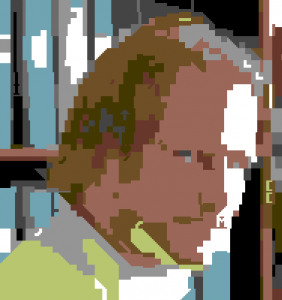
Most other genres went to war in the 1980’s to fight about digital this and anddigital not that. But dub just kept on dubbing. Even if it was really techno-centric with effects and mixers and instrumentation, the societal change in technology didn’t really matter so much.
It’s a similar thing with chip music. There’s some kind of basic approach that stays the same, regardless of technological changes. Making music with text, with sounds from basic mathematics. Not wasting resources. I mean, you can do that without computers, too. And maybe it’s these things that will define what chipmusic is in 20 years and not the aesthetics of it, like today.
Anyway, for me it’s important that dub has a feeling of non-control, of being a bit out of order. Unpredictable. And with the C64 it’s easy to bring that forward. There’s a lo-fi unpredictability in the hardware, that you can amplify in the music as well.
And then to bring all of that into a cartridge, that you can plug into an old home computer, and navigate in a mysterious interface that doesn’t really make sense. That is kind of dubby, to me. And then of course there is the remix mode, where you can really dub out the song beyond recognition and beyond sense. Very dub. If you can find it, that is.
iLKke
Your PETSCII work is featured in the DUBCRT and you also had a large amount of input in regards to the planning of the design of the cartridge,
what thoughts do you have on the PETSCII character set and how you approach using it in a refreshing and creative way.
I feel what gives the PETSCII character set its lasting artistic relevance is that it was only moderately successful at being universal

and generic. Much like the 16 color palette that accompanies it, it is universal enough to allow a breath of expression, yet limited enough to provide a fun and constructive creative restraint.
As for the way I’m using it personally, I think I’ve mostly just transplanted a couple of styles I’ve developed elsewhere that just happen to work with PETSCII. In this regard I’ve done little to explore the limits of what the character set offers.
4Mat
You have had a large history of being regarded as a scene / game composer Matt, what inspired you to begin coding in assembly for the C64 or otherwise.
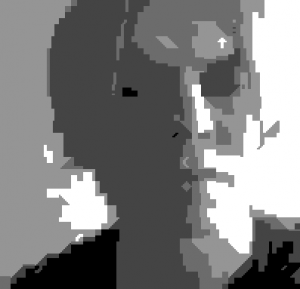 When I had a C64 in the ’80s as a child I never learnt assembly, this was always some ‘unfinished business’ for me. So when I got back into old machines in the late ’90s I made a real effort to learn it, which was considerably easier with the resources we have available now. C64 gets a bad rap for its BASIC but in hind-sight the lack of dedicated commands for the custom chips means learning assembly is a much easier leap to make, because a lot of the things you’ll be using day to day are pretty much done the same way as in BASIC.
When I had a C64 in the ’80s as a child I never learnt assembly, this was always some ‘unfinished business’ for me. So when I got back into old machines in the late ’90s I made a real effort to learn it, which was considerably easier with the resources we have available now. C64 gets a bad rap for its BASIC but in hind-sight the lack of dedicated commands for the custom chips means learning assembly is a much easier leap to make, because a lot of the things you’ll be using day to day are pretty much done the same way as in BASIC.
Initially when Goto80 approached you in regards to coding the DUBCRT framework, what attracted you to the project?
Goto80 had originally seen a few of my 1k demos, particularly “In a loop” I think and he had similar ideas to what I’d been working on in there. Obviously the thing with doing small programs is you don’t have a lot of room for data, so finding ways to generate interesting data is going to increase the quality of the production. I was using the SID registers to generate data and that lead to some interesting things because the waveforms can produce a variety of results, from more natural objects using sinusoidal waves to chaotic or binary items which seem more industrial. Even though the size limits are gone with Dubcrt the basic premise of using the SID to generate the visuals remains.
Can you outline how your code allows the SID activity to determine the nature of the visualisers in DUBCRT?
The usual approach is to dig into the music driver and find interesting variables there to attach to. However with the SID you can also read out some of the registers directly which I tend to prefer, because it’s the actual output of the music rather than the output of the player before it gets to the SID chip. Attaching your visual variables to that in a few different ways can throw up different kinds of visuals, I like to get the routines to a point where they’ll produce a complete ‘performance’ for a track that I think sums up the track that is playing. Unlike more traditional demo coding that won’t necessarily come from optimized code, infact there’s some pretty ineffecient routines in there which produced a more satisfactory visual result for me than when I improved them, so the originals stayed in.
GENERAL PROMO INFO FROM PROMO ONE SHEET
DUBCRT
DUBCRT is a music album, interactive light synthesizer and remix gadget released as a Commodore 64 cartridge. With music and visuals from some of the most prolific experimentalists of the 8-bit scenes, DUBCRT taps into 1960s modernist forms, 1970s dub, 2000s glitch aesthetics, and 2020s sustainable computing. DUBCRT features:
- Eight songs ranging from ambient to IDM and drum n’ bass
- Visualisers that react to the music, and that are user-controllable
- A secret remix module that allows you to re-interpret all the music on the cartridge
Uses only 64 kilobytes
All of this uses only 64 kilobytes – equivalent to 1.5 seconds of MP3-audio. This is possible thanks to clever use of resources, and by making all the graphics in PETSCII, the colourful and quirky ASCII-variant of the Commodore 64.
The cast
Everyone involved has a background in the so called demoscene, an underground creative computer subculture around since the 1980’s.
Goto80 (audio, Sweden) was one of three nominees for best C64-composer at Commodore’s 25 year anniversary, and regularly performs live around the world. He also does academic research on text mode graphics and retro computer cultures.
4-mat (programming/design, UK) makes tiny audiovisual art for various 8-bit computer systems, and works with game audio. He was also one of the first in the world to make chipmusic on the Amiga in 1990.
iLKke (graphics/design, Australia) is a notorious pixel artist and composer, who started in the Amiga demoscene in Serbia.
Ray Manta (concept/design, Australia) is the alias of veteran electronica producer Tim Koch, who initiated and organized the project.
The Bandcamp-release also includes remixes from Julien Mier (Finland), Datassette (UK), Mesak (Finland), Ssaliva (Belgium), Jellica (UK), Faderunner (Canada), Tim Koch (Australia), Ioeb (Sweden), Sqein (Sweden)
Facts
DUBCRT was released by DataDoor in mid-2016 as a hardware cartridge for the Commodore 64 and as software that can be run on modern computers with emulators such as VICE. Further to this initial run of cartridges, DUBCRT was licensed to be manufactured by Shareware Plus in the UK, and is still available to be ordered from the DUBCRT page.
Miscellania
DUBCRT is best enjoyed with maximal foliage in the foreground – here Goto80 jams out his own songs in DUBCRT mode! :
Unboxing and testing of DUBCRT:
DUBCRT fed through an oscillator:
